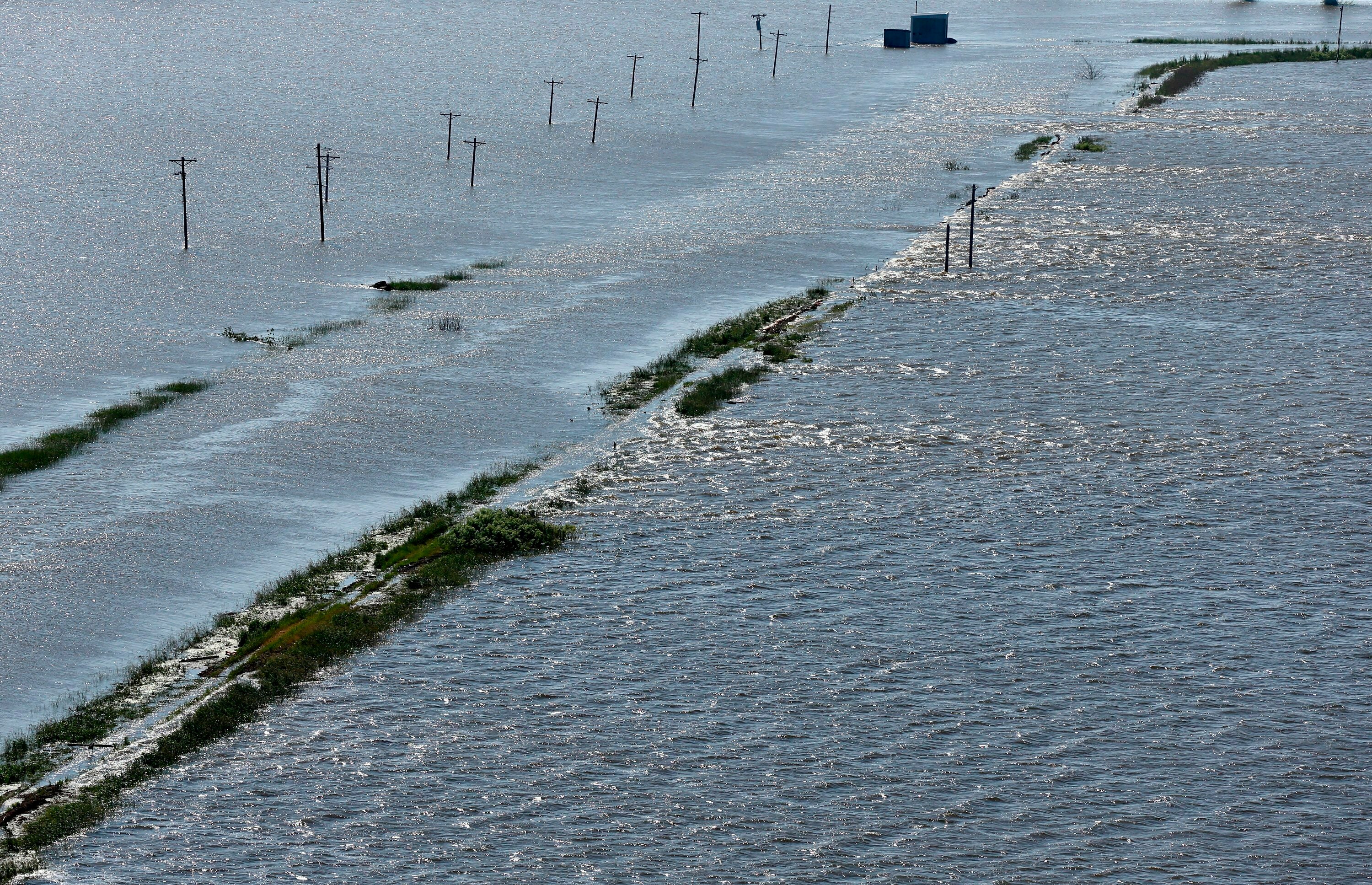Water quality, flooding mean low grade for major watershed
A new report card gives a low grade to the Mississippi River Watershed and cites a need for billions of dollars in new spending to address concerns like flooding and water quality involving the nation’s largest rivers

Your support helps us to tell the story
From reproductive rights to climate change to Big Tech, The Independent is on the ground when the story is developing. Whether it's investigating the financials of Elon Musk's pro-Trump PAC or producing our latest documentary, 'The A Word', which shines a light on the American women fighting for reproductive rights, we know how important it is to parse out the facts from the messaging.
At such a critical moment in US history, we need reporters on the ground. Your donation allows us to keep sending journalists to speak to both sides of the story.
The Independent is trusted by Americans across the entire political spectrum. And unlike many other quality news outlets, we choose not to lock Americans out of our reporting and analysis with paywalls. We believe quality journalism should be available to everyone, paid for by those who can afford it.
Your support makes all the difference.A group developed to help improve management of the Mississippi River Watershed has issued it a disappointing report card, and says urgent action and billions of dollars are required to address flooding and water quality concerns in the nation's largest rivers.
America’s Watershed Initiative on Tuesday released its 2020 report for the Mississippi River and its more than 250 tributaries. The 2020 C- grade is only a slight improvement on the D+ grade the group issued for the watershed in its first report, in 2015.
The watershed, which encompasses two-fifths of the continental U.S. and 31 states, remains threatened by increasingly frequent and extreme flooding as well as aging infrastructure and pollution, the report said.
Kimberly Lutz, the initiative’s executive director, said the watershed faces “pressing challenges.”
“As the United States looks to recover and rebuild our economy amid the coronavirus pandemic, the health and resilience of this critical natural resource —through investments in infrastructure, research, education and flood and water management — must be part of the solution,” Lutz said in a news release.
The report characterized water quality in the system as “very poor” due to increasing sediments and nutrients. It gave a D grade for water quality, flood control and risk reduction. Other factors assessed include ecosystem health, the economy and recreation.
To protect the water system, the initiative called for $2 billion in annual funding through government and private sources to address issues such as river navigation, flood management and the ecosystem. It also urged greater collaboration among river interests and improvements in information gathering and public education.
Report Card Committee Chairman Larry Weber said the challenges faced along the rivers demand urgent action, including “smart investments in scientific information to improve decision-making and coordinated on-the-ground implementation.”
Lutz said the goal of the report card is to provide decision makers and others with information to develop a collaborative approach to managing the watershed. She said the group plans to release a new report every five years to help track progress and shortfalls.
The report card was developed jointly with the University of Maryland Center for Environmental Science. The initiative, founded in 2010, comprises representatives from business and the public sector with expertise in river management and conservation issues.